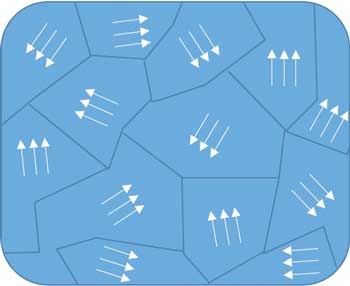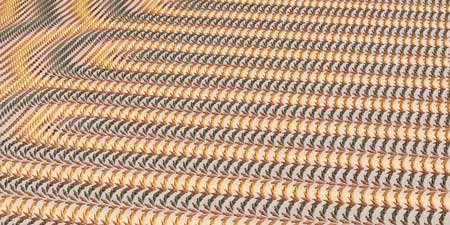| Posted: May 03, 2018 |
Topological domain walls in helimagnets
(Nanowerk News) Researchers have discovered three distinct variants of magnetic domain walls in the helimagnet iron germanium (FeGe). Their results have been published in Nature Physics ("Topological domain walls in helimagnets").
|
|
Researcher Dennis Meier, an associate professor at the Norwegian University of Science and Technology (NTNU), says to understand the significance of the discovery, you have to first consider how magnetic fields are created.
|
|
An electric current can generate a magnetic field, as in electromagnets. The second source of an electric field is spin, which is the magnetic moment of an atom's elementary particles.
|
|
The type of magnetism we commonly think of is ferromagnetism. This type of magnetic order occurs when the magnetic moments of the atoms in a substance are essentially aligned - that is, they point in the same direction. Then they attract or repell other magnetic objects.
|
 |
| In ferromagnets, each of the domain’s atoms has magnetic moments that point in the same direction. (Image: Wikimedia Commons)
|
|
With helimagnets, the atoms' magnetic moments arrange themselves in spiral or helical patterns instead.
|
|
Iron germanium (FeGe) is a mixture of iron and the metalloid germanium. It has a crystalline structure similar to what we find in a diamond, where the same pattern of atoms repeats itself.
|
|
In reality, this material is not as uniform as it looks. The crystal may be close to perfect, but the magnetic structure can simultaneously have its own organization.
|
|
In other words, an apparently perfect crystalline structure in a solid is divided into separate areas, each with its own special magnetic properties. These magnetic regions are called domains.
|
|
In ferromagnets, the atoms in each of these domains have magnetic moments pointing in the same direction, but the direction varies between neighboring areas.
|
|
In helimagnets we find domains with spiral patterns instead.
|
|
The transitions between these areas are called domain walls, which are what Meier and his colleagues are studying.
|
 |
| In helimagnets we find spiral-patterned domains. When two of these domains meet, exotic spin structures arise. (© Nature Physics)
|
|
The international research group discovered three new classes of domain walls in helimagnets. The special patterns occur because of so-called topological defects.
|
|
The researchers were lucky to find them, Meier says, with perhaps a bit more modesty than necessary. But you have to know when you're lucky, he adds with a grin.
|
|
Their discoveries are completely new to science.
|
|
Domain walls can have exotic magnetic properties that the regions which they separate don't reveal. The walls, for example, may interact more strongly with an electric current and could possibly be used for data transfer and storage in the future.
|
|
This discovery may someday provide an alternative to today's computers, which flip the magnetic field and toggle the voltage between 1 and 0, or 'on' and 'off.' This method is far more energy intensive than moving topological magnetic structures along so-called "racetrack memories."
|
|
"The next thing we're going to do is try to influence these new domain walls," says Meier.
|
|
The researchers will attempt to direct these walls with an electric current - that is, get control of them. For this project Meier and his team at the Department of Materials Science and Engineering will collaborate with colleagues from the NTNU's new Center of Excellence QuSpin (Center for Quantum Spintronics).
|


